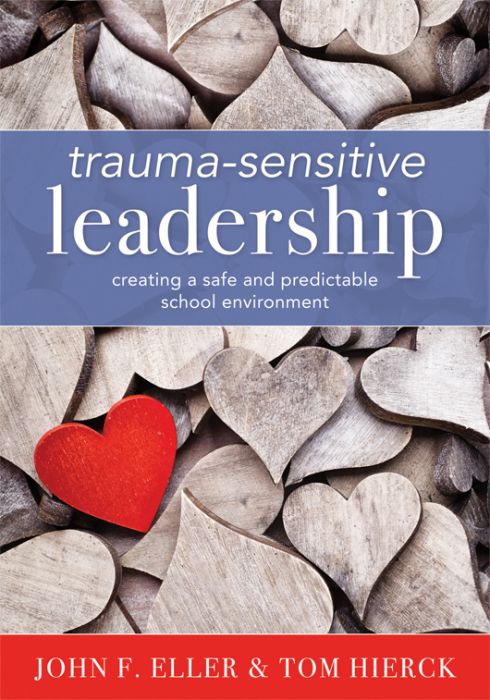Becoming a Trauma-Sensitive School
From Trauma-Sensitive Leadership by John F. Eller & Tom Hierck

Because we’ve seen an increase in traumatic experiences in recent years, leaders need to develop their understanding of trauma’s impact and promote understanding among staff. With trauma-sensitive strategies in place, schools can support trauma-impacted students to learn and thrive. Trauma-Sensitive Leadership helps school leaders develop their understanding of trauma and includes ideas for strategies to implement.
6 Principles to Guide a Trauma-Sensitive School
Work to understand these 6 trauma-sensitive principles below – from the Substance Abuse and Mental Health Services Administration (SAMHSA). Then ensure that every policy and practice – from budgeting and discipline to the curriculum – aligns well to them.
1. Safety: After experiencing trauma, people don’t feel safe and end up expending their resources on remaining hyper-vigilant. To help them feel safe, build an environment that focuses on healing, learning, and healthy development.
2. Trust and dependability: Trauma makes it hard for people to trust others. To build trust it helps to prioritize steadfast, authentic relationships and provide stability and predictability.
3. An understanding of stress and trauma: It’s hard to know how to respond until you understand the impact of stress and trauma on a person. Work with peers to develop understanding and compassionate responses.
4. Collaboration: Trauma can make people feel alone so it helps to develop healthy relationships in which those impacted by trauma experience power with others so they can feel safe and trusting enough to engage in learning.
5. Empowerment: Because trauma takes away people’s sense of control and leaves them feeling helpless and hopeless, it helps to create an environment in which people’s voices are heard, their strengths recognized, and they are empowered to move forward.
6. Cultural humility and equity: Different groups react to trauma differently and acknowledging historical and institutional adversity with humility can help in not re-traumatizing people and beginning to address historical trauma as well.
5 Ways to Support Trauma-Impacted Students in the Classroom
Leaders can support teachers in developing classroom structures that to help trauma-impacted feel safe and supported enough to learn.
A. Teacher Attitude and Relationships: Students coming from traumatic homes need unconditional support. This means teachers having a caring and positive attitude and believing that they are there to teach children first and content second. “Relationships are not easy… Just managing ‘normal’ relationships with our friends, coworkers, and family can be challenging. When we bring trauma-affected students into the equation, the delicate nature of relationships stands out even more clearly.”
B. Classroom Culture: In supportive classrooms you see students working collaboratively toward common goals and listening to and respecting each other. In working with teachers, emphasize that they are the ones to establish this strong culture. When teachers create supportive classroom cultures, this has a ripple effect and influences the culture in the entire school. As a school leader, you can further support this effort by conducting walkthroughs that focus on caring classroom structures, praising students for supportive behaviors, and by giving time in faculty meetings for teachers to plan for supportive cultures and problem-solve to address challenges.
C. Predictable Classroom Structures: Given that trauma-impacted students often don’t know when a drunk parent may come home and be violent, their brains are often on high alert and they need predictable classroom structures. This means establishing predictable routines like daily check-ins, consistent approaches to discipline issues, and creating a predictable schedule. There are more suggestions for classroom structures in the authors’ other book specifically for teachers: Trauma-Sensitive Instruction (from SolutionTree).
D. Movement: It can be difficult for trauma-affected students (and all students!) to sit for prolonged periods of time. Leaders can support teachers in finding ways to weave movement into their classes to re-energize students’ learning centers in the brain and to prevent boredom. Even just 30 seconds of students moving their bodies can help with this! Some simple strategies include having students stand to stretch, get up to meet with other students in the corner, take a 1-minute walk around the room, and more.
E. Helping Students Reflect on and Monitor Their Mind States: A key part of trauma-impacted students building resilience is developing the ability to manage their emotions. At home they may move from trauma to trauma without thinking about it. Leaders can help teachers establish a culture that includes regular reflection – for example, conducting class meeting to process events, having students write down and then read their thoughts, and using a mood meter so students can identify and rate their emotions.

